
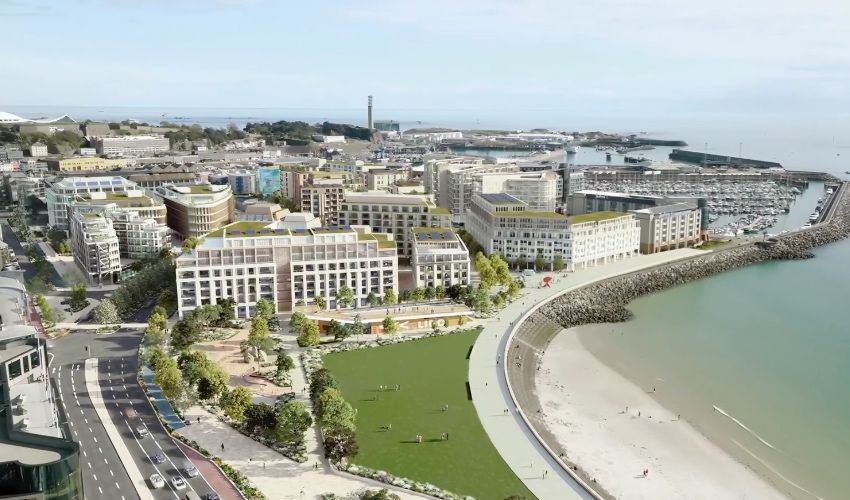

After years and years in the making, multi-million proposals to completely revamp the Waterfront area with new facilities and around 1,000 homes were comprehensively rejected last week... But why?
Although an independent inspector recommended that a panel of politicians set up to determine the application should hold off making a decision until the applicant – Jersey Development Company – comes back with improvements, the panel rejected both that suggestion and the application itself.
Here Express looks at why the application was kicked out, why the panel decided to go further than the inspector, and what might happen now.
During a week-long public inquiry, independent inspector Philip Staddon – who also oversaw the Our Hospital planning inquiry – heard and received a plethora of evidence.
He found that much of the JDC’s application – which had been formed over several years of consultation, followed Government-issued guidance and frameworks, and involved discussions with planning officers – complied with policies set out in the Bridging Island Plan, the key Assembly-approved document against which all applications are judged.
However, Mr Staddon identified a number of considerable barriers, including the intractable problem of dealing with the contaminated waste that would be generated when excavating to create basement car parking.

Pictured: Independent planning inspector Philip Staddon, who also oversaw the Our Hospital planning inquiry.
In April, the fact that the Government had illegally dumped contaminated waste for two decades came to a head when the Planning Committee refused a retrospective application to legitimise two large headlands of hazardous spoil at La Collette.
This meant that the contaminated earth – containing ash and heavy metals – that JDC were hoping to remove from the Waterfront had nowhere to go.
As Mr Staddon commented in his report: “A somewhat unexpected twist in this inquiry has been the unfolding crisis concerning waste management and disposal in Jersey.
“It is extraordinary that the island seemingly finds itself in a situation where it currently has no existing lawful operational facility to receive waste arisings, including contaminated waste, from this, or any similar waste producing development project.”
It was the reason why the Planning Department could not support the application. Following the inquiry, the States Assembly has approved a ‘short to medium-term’ to increase the height of the existing mounds, which have now received planning approval.
However, an application from the Infrastructure Department to increase their height by another 4.5m has not been determined.
Mr Staddon was clear in his views: “Jersey is facing a waste management crisis and, until that crisis is resolved, and certainty provided through a clear strategy and its implementation, I cannot see how the Waterfront application, and indeed other similar scale developments generating waste requiring landfill disposal, can be permitted under planning legislation.
“Unlike many other planning issues, this is not a matter that can be weighed in the planning balance.”
In his conclusion, he stated: “The waste crisis prevents the granting of planning permission at this point in time, as there is no certainty that the substantial amount of waste, including contaminated waste, which arises directly from the specific type and amount of development proposed, can be satisfactorily treated and/or disposed of.”
He added: “The situation concerning waste disposal is unprecedented and extraordinary. The current absence of waste facility to enable the development to happen amounts to a refusal reason in its own right and in my view, it is a development ‘showstopper’.
“Notwithstanding other issues, the applicant is unable to solve this problem and, until there is an agreed way forward, this scheme and indeed others reliant on landfill void capacity are placed in limbo.”
However, for Mr Staddon, there was an even bigger issue: the fact that Route de la Libération severs the Waterfront off from the rest of town.
Previous proposals and masterplans for town have long identified the six-lane highway as a significant barrier to connecting St Helier’s newest quarter with its traditional heartland, much of which, perhaps ironically, is also reclaimed.
Ideas to sink and then cover the underpass or building a bridge over it have been dismissed as too costly or fanciful.
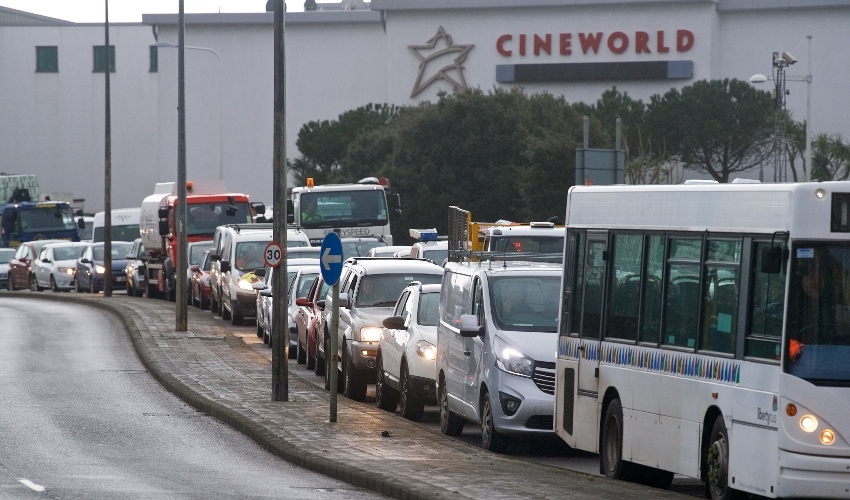
Pictured: What to do with Route de la Libération has been a major stumbling block since it was first built and land to the south reclaimed.
However, all previous planning guidance was superseded by the 2019 Southwest St Helier Planning Framework.
On the road, it said: “One of the main barriers to achieving a good connection between the harbours, the Waterfront and town is La Route de la Liberation which is heavily trafficked, up to six lanes wide and partially sunken, making an ‘at-grade’, or same level, crossing point difficult to achieve.
“While the 2008 Masterplan was predicated on the sinking of the road and its subsequent covering-over to provide additional site areas for public space and building plots, it is now widely considered that the financial viability of this proposal is unrealistic.
“This new framework, therefore, is based upon the assumption that the road will not be lowered and covered, but that interventions should be fully considered to make the crossing of the road a viable, safer and easier experience.”
Options in the framework included “transforming the highway into a street or boulevard”, creating “safe and generous” crossing points, “exploring the option of bridging the road with a wide and attractive pedestrian / cyclist raised thoroughfare” and “Introducing hedging and planting within the central reservation to break up and soften the expanse of tarmac road”.
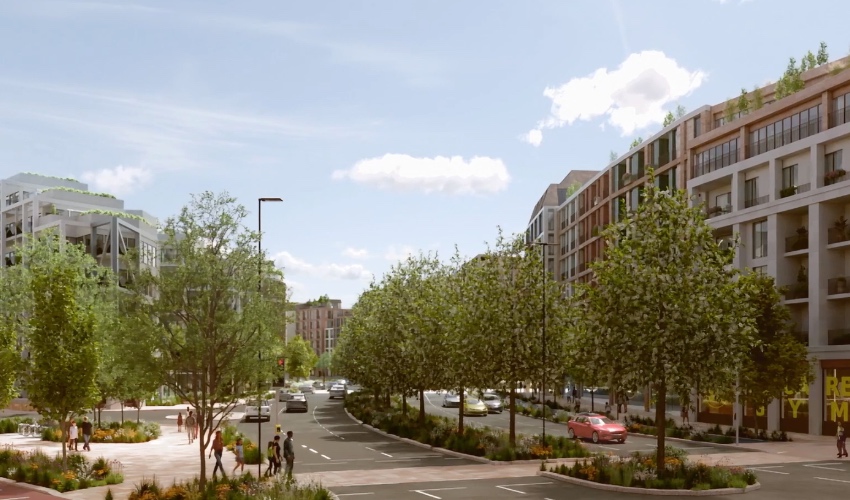
Pictured: JDC's plans included creating a single pedestrian crossing and a wider central reservation down Route de la Libération.
Some of those options featured in JDC’s application but the inspector, and the Determination Panel of politicians, clearly felt they were not enough.
In his conclusions, Mr Staddon wrote: “Some of the matters are capable of being addressed quickly and easily, other matters will require reworking of the parameter plans and may have knock on implications for the development quantum and the form of the application.
“The ‘big issue’ concerning severance/connectivity will require more complex, imaginative and future looking effort; it will not be easy to address and any solution will need political support, but doing so is critically important to the success of the Waterfront quarter, its connection to and integration with the town centre, and to the lives of all those that will live in, work at, and visit the Waterfront area.
“I therefore recommend that the Minister resolves not to determine the application for the time being and invites the applicant to work with the planning authority, the highway authorities and Jersey Architectural Commission to address the matters identified, should the Minister endorse my findings.
“If the applicant accepts that opportunity and challenge, and the background uncertainty arising from the waste situation, this could be achieved procedurally by leaving the Inquiry open.
“It could then reconvene for a focused ‘mini-Inquiry’, and the production of a final report and recommendation, followed by a formal decision by the Minister and Determining Panel.
“If the applicant does not wish to accept that invitation, or to withdraw the application, I recommend that permission be refused for the reasons identified in this report […].
“I do consider that would be unfortunate, as the development proposal has the potential to be revised and enhanced to achieve a successful planning outcome, and to deliver very considerable and wide-ranging public benefits.”
The trio formed especially to decide on this specific application – Environment Minister Jonathan Renouf, Assistant Environment Minister Hilary Jeune and Planning Committee Chair Philip Le Sueur – took on much of what Mr Staddon had noted, but rejected his idea of not determining the application and holding a future ‘mini inquiry’.
This, they concluded, was a flawed approach that would promote “incrementalism” and “tweaks” rather than encourage a more wide-ranging re-examination of the application. They expressed concern that JDC would retain the elements that have got over the line, which in turn would limit solutions for the parts that failed to be supported.
They said: “This development is on a prime waterfront location and should be an exemplar. What is on offer here falls short in too many respects.
“This site represents an opportunity to achieve something special that is well connected with the rest of town and the public both now and future generations will appreciate and value.”
Other reasons for refusal were based on concerns that had also been raised by Mr Staddon, including the quality and aspect of flats proposed and the level of affordable housing, which both the inspector and panel concluded was “an unduly low level of provision”.
In a brief statement issued last week, JDC said: “Jersey Development Company is obviously disappointed to receive a Planning refusal to its Outline Application for the Southwest St. Helier Waterfront.
"The planning application was submitted following planning guidance from the planning department and substantial engagement with the public.
“JDC will await receipt of the Inspector’s report and the decision notice of the Minister’s panel then review and consider our next steps”.
It is not inconceivable that JDC will feel a little exasperated, and argue that it did what was asked of it, including maximising the number of homes in line with Government policy, providing self-funded public amenities and using the Southwest St Helier Planning Framework and the Bridging Island Plan as its development guides.
It will also no doubt argue that it had the democratically approved mandate to only provide a minimum of 15% of the 984 units as affordable (148).
Previously attempts in the Assembly to raise that level to 30% and 50% had failed, largely on the basis that it would render the scheme, as well as South Hill, unviable, both JDC and Ministers argued.
A commercial developer might have recourse to the Royal Court to challenge the decision of the panel, but because JDC is owned by the taxpayer, it would effectively be the public taking on itself, which would certainly be seen as a waste of money, if indeed it can happen at all.
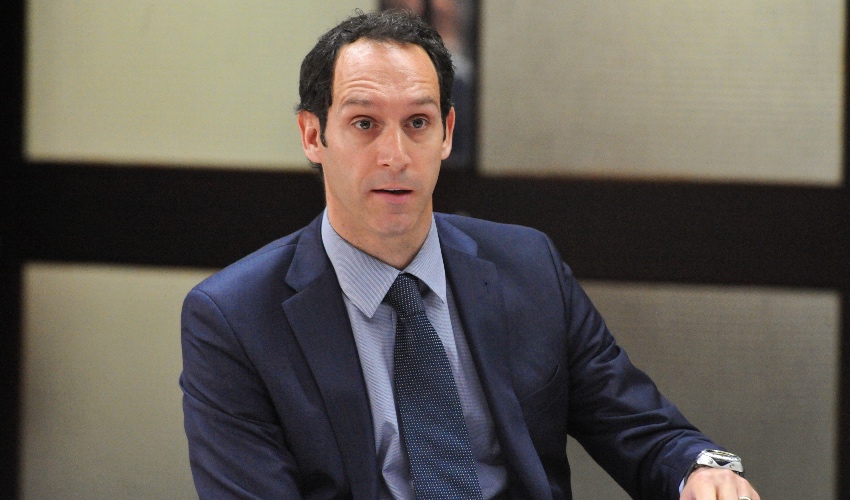
Pictured: JDC Chief Executive Lee Henry will be poring over the inspector's and panel's findings before deciding the publicly owned company's next move.
One thing JDC will certainly be asking Government will be absolute clarity on what can and should happen with Route de Libération, and how many units should be deemed affordable, before it submits a fresh application, with its hundreds of documents and plans.
On the former, it could suggest that if the Government wants the road to be sunk, bridged, diverted or changed in another way, perhaps it should consider paying for it, something that former Environment Minister John Young – who was strongly against the application – has already suggested.
One thing which JDC hopes has been resolved is the issue of contaminated waste, after the Assembly backed the Infrastructure Minister Tom Binet's 'short to medium term' plan to increase the height of headlands of hazardous material at La Collette, as well as create new ones.
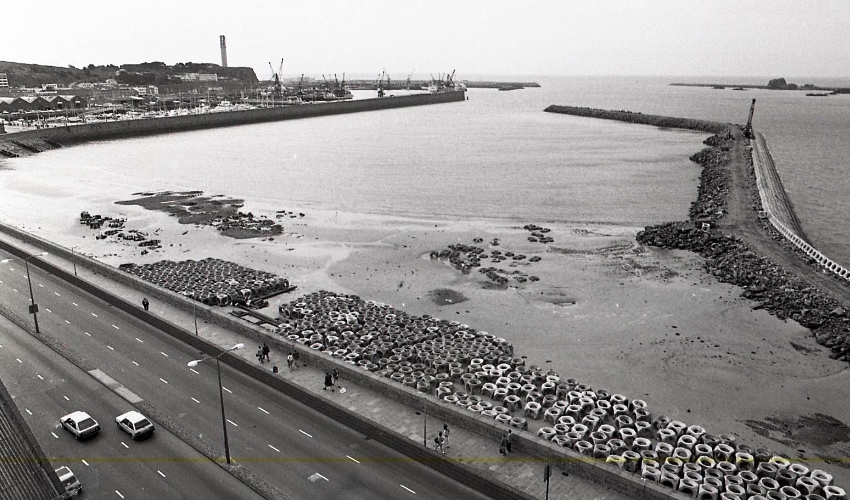
Pictured: The West of Albert reclamation was the island's primary waste dump in the 80s and 90s, including bottom ash from the Bellozanne incinerator.
However, while a retrospective application for the existing mounds has been approved, a second application seeking to grow those mounds – to accommodate the 113,000 m3 of waste expected to be excavated from the Waterfront – is yet to be determined.
With the Waterfront application being rejected, the pressure for approval to expand the headlands may have alleviated.
Even if the issue of waste is settled in the medium term, the JDC will still have to deal with the other main points of rejection, including the quality of its design ... as well as the road.
During Question Times in the States Assembly today, Chief Minister Kristina Moore said that the planning application for the Waterfront scheme had been submitted during the previous Government's time in office, and that there had been no opportunity for her new Government to modify it.
Deputy Moore said that the next steps would be considered by the Future Place Ministerial Group, which she chairs, with a meeting due to take place with the Jersey Development Company later this week.
"We will need time to consider the detailed report and to look at the viability of having a greater proportion of affordable housing," she said.
Deputy Sam Mézec said that the Government had discontinued several of the schemes initiated by its predecessor, adding: "We can only assume that this failed project, with no public benefit, will be cast aside and replaced with something that islanders can be proud of."
'Use it or lose it' warning as Cineworld strikes deal to stay open
Waterfront inquiry hears plans for outdoor lido
Major Waterfront development "will add one minute to car journeys"
WATCH: Plan to plant 500 trees at Waterfront
Toxic waste dump plunges major Waterfront development into doubt
Comments
Comments on this story express the views of the commentator only, not Bailiwick Publishing. We are unable to guarantee the accuracy of any of those comments.